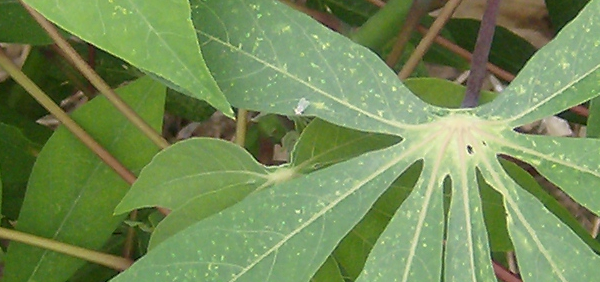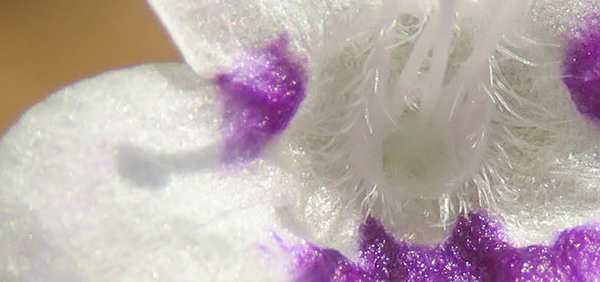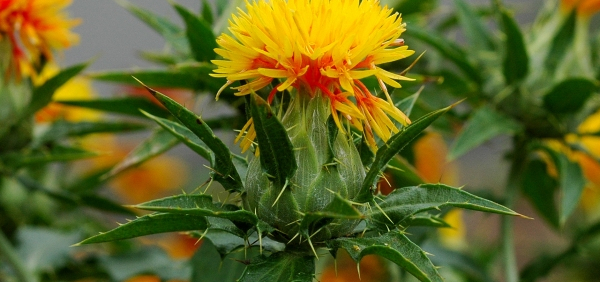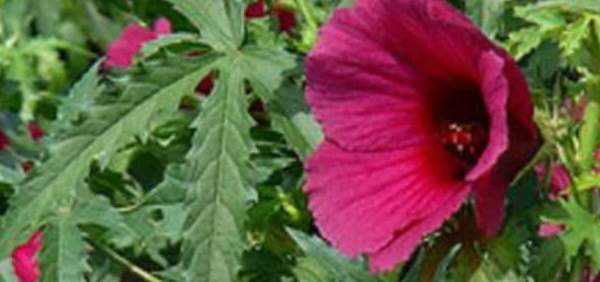vishamushti :

Cultivation:
Soil nutrients
Ageratum conyzoides directly or indirectly affects soil chemistry and composition, ecosystem functions and creates a novel environment for native species. Heavy infestations of the weed modify the soil environment through root exudation, affecting soil structure and mobilizing or chelating nutrients (Singh et al., 2003). Furthermore, it causes depletion of soil nutrients because of resource competition, rendering it unfit for effective growth of crops and making sustainability difficult. Manandhar et al. (2007) reported a significant reduction in soil nitrogen and phosphorus in paddy fields due to weed infestation. On the other hand, Batish et al. (2009a, b) reported that weed residues enriched soil nutrient content despite the negative effects on crop growth.
Harvesting:
Physiognomically, A. conyzoides is an annual erect aromatic herb that shows considerable variation in shoot height (59-120 cm) in a stand at maturity stage (Table 5.3); however, the average height of plant is -1 m (Kumar and Singh, 1988). The stern is erect, branched, cylindrical and decumbent, and covered with fine, white hairs. Leaves are opposite, ovate and triangular, and pubescent with the long petiole (1.5-2.0 cm or even up to 3.2 cm), covering an area of -31 cm2 and bearing trichomes (56 in number) on both surfaces (Kirtikar and Basu, 1984; Arora, 1999). Plants have a shallow tap root system with a radius of spread of -8 cm. The plant bears blue-violet terminal inflorescence (Fig. 5.3) and a capitulum of homogamous disc florets (>70 capitula per plant) arranged in corymbose racemes (Kumar and Singh, 1988; Arora, 1999). The inflorescence changes colour from blue when young to white at maturity. The number of florets per head varies in the range 56-86 (Anonymous, 1988; Table 5.3). The flowering period of the weed is long, and flowers retain their violet colour for a longer period of time. The fruit is a typical achene with pappus and easily spread by wind and animal hair. Seeds are minute (<1 cm), black and extremely light in weight, elliptical, bear a pappus, are produced in great numbers (Table 5.3) and are transported up to hundreds or thousands of miles. Arora (1999) reported that in Chandigarh, wild-growing plants produce on average 5000 seeds. However, Rodriguez and Cepero (1984) reported a total of 94,772 seeds per plant. The weed completes its life cycle in about 10-12 weeks, and seeds are
shed, resulting in tremendous increase in its intensity next season (Bansal and Singh, 1986). The propagation of the weed through seeds is so rapid that it covers almost any terrain not under intensive use or abandoned. Ageratum conyzoides is a shadetolerant plant and flourishes well in any type of garden soil such as clayey, sandy or loamy with wide range of pH. Soils rich in moisture, minerals and air are best suited to its growth. In hilly tracts of subtropical to temperate environment, the weed is present throughout the year. However, in the plains, it emerges during the onset of winter and remains till early summer. In shady and moisture-rich areas the weed is also seen during the summer rainy season; however, in such areas it has a relatively shorter life span and reduced density (Kohli et al., 2006).
- » Classification and names of vishamushti
- » Synonyms and definitions of vishamushti
- » Drug Properties of vishamushti
- » Chemical Constituents of vishamushti
- » Standardization of vishamushti
- » Parts used and Dosage of vishamushti
- » Morphology and Histology of vishamushti
- » Distribution and Conservation of vishamushti
- » Cultivation of vishamushti
- » vishamushti in the market
- » Medicinal Uses of vishamushti
- » Researches and clinical trails of vishamushti
- » vishamushti in other sytems of medicine
- » Ayurvedic formulations with vishamushti
- » Images of vishamushti













